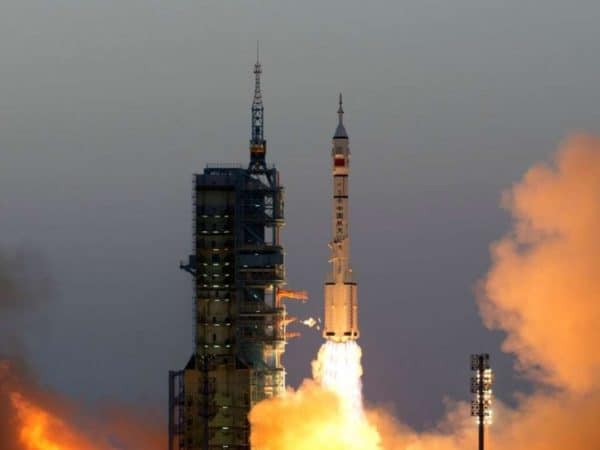
 China recently announced the successful docking of its Shenzhou-11 spacecraft with the Tiangong-2 space lab, a move than brings the country and its aerospace ambitions closer to reaching their goal of building their own space station.
China recently announced the successful docking of its Shenzhou-11 spacecraft with the Tiangong-2 space lab, a move than brings the country and its aerospace ambitions closer to reaching their goal of building their own space station.
Coupled with the European Space Agency’s (ESA) recent collaboration with Roscomos, the Russian space agency, in sending a spacecraft to Mars, international relations pundits and space enthusiasts the world over may now be asking, are we headed towards another space race?
Here’s where we stand so far.
Earlier this week, the Shenzhou-11 mission sent two astronauts into space from a military launching pad in Mongolia, successfully joining up with China’s space lab. The event has pushed ahead the country’s for a space station and represents just one piece of its larger vision for space exploration. China also plans to reach Mars by the year 2020 and to set up a permanent colony on the moon. In speaking to the BBC earlier this year on his nation’s plans, Wu Weiren, chief designer of China’s moon and Mars missions said, “Our long-term goal is to explore, land, and settle [on the moon]. We want a manned lunar landing to stay for longer periods and establish a research base.”
As far as other nations are concerned, along with the ongoing joint ESA-Roscomos ExoMars mission, smaller players seem to be quickly getting caught up to speed. Both Japan and India, for example, are planning missions to the moon and nearby objects. And despite recent setbacks, the private sector is determinedly nurturing its taste for space travel and has received backing by real money from ambitious entrepreneurs and high tech innovators. For one, SpaceX founder and CEO Elon Musk has assured the world that building a human colony on Mars (“to make life interplanetary,” Musk says) is both doable and desirable, pledging to lower the per person costs from $10 billion to an affordable $200,000 USD and boasting that he’ll reach the goal by 2025, well ahead of NASA’s plans for a human-led mission to Mars sometime in the 2030s.
All of which leads us to wonder about the supposed U.S. supremacy in the great beyond. To wit, the NASA-led International Space Station, launched in 1998, is set to retire in 2024, potentially leaving China the lone proprietor of a permanent orbiter. China is “on the rise and the U.S. is in very real danger of falling behind in the future,” warned Leroy Chiao, a former NASA astronaut and commander of the International Space Station.
Furthering the chatter on China, U.S. Rep. Lamar Smith, current chair of the House committee on science, space and technology, recently spoke on the topic, saying, “Over the years, our focus has waned and now China’s accomplishments in space have become commonplace. We cannot afford to ignore Chinese achievements and become complacent.”
But hold on, folks, the reality is that with an annual budget of over $40 billion, the U.S. aerospace program currently outguns its rivals by a long shot. That, in a nutshell, is all the evidence you need on the topic. China’s program, the second largest in the world, is a substantial but much smaller $27 billion. (What about Canada’s, you ask? We’re down for a little less than a half a billion, annually. That’s Canadian dollars.)
Further, the United States has no intentions on giving up its leadership in space. The U.S. Senate Commerce Committee recently approved a bill intent on providing continuity to NASA funding and ear-marked a full $19.5 billion for NASA projects including those to send a manned mission to Mars.
In other related (but sad) news, the European Space Agency has just announced that it has lost contact with the ExoMars Schiaparelli lander, which strongly suggests that the craft crashed during landing on the red planet. Andrea Accomazzo, ESA’s spacecraft operations manager, stated, “When we put it in the Martian environment, the spacecraft didn’t behave exactly as expected … It might take quite some time before we are able to locate it.”
Leave a Reply
You must be logged in to post a comment.




 Share
Share Tweet
Tweet Share
Share




Comment